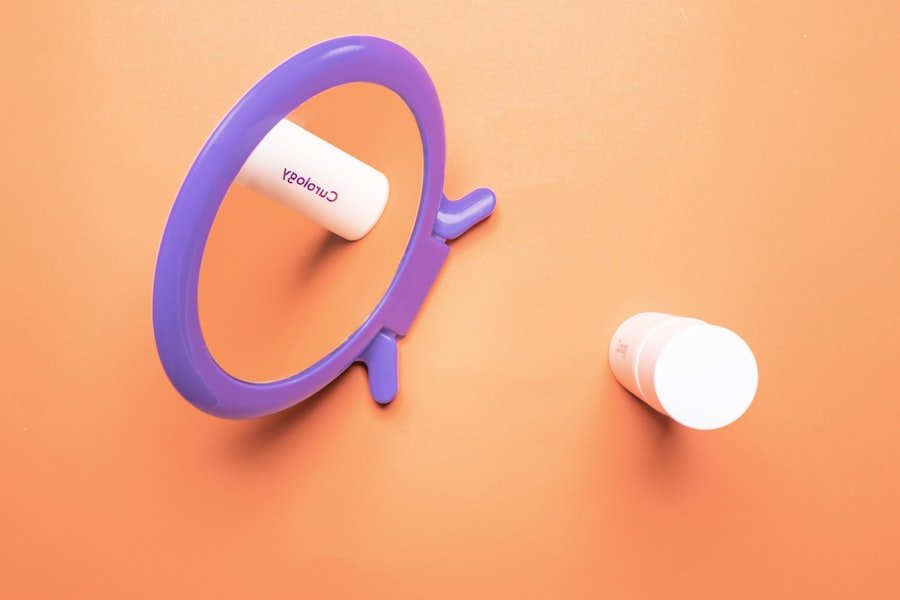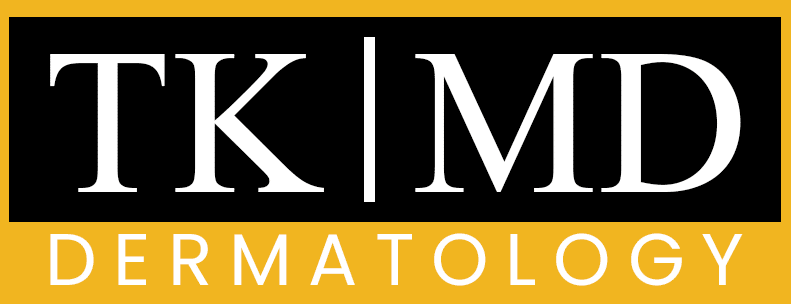Sebaceous hyperplasia is a common skin condition characterized by the enlargement of sebaceous glands, which are responsible for producing oil that keeps our skin moisturized. This benign condition often manifests as small, soft, yellowish bumps on the skin, particularly on the face, especially around the forehead, cheeks, and nose. While sebaceous hyperplasia is not harmful and does not pose any health risks, it can be a source of cosmetic concern for many individuals.
Understanding this condition is crucial for those who may be experiencing it, as it can help alleviate anxiety and promote informed decisions regarding treatment. The appearance of sebaceous hyperplasia can sometimes be mistaken for other skin conditions, such as acne or warts. However, it is essential to recognize that these bumps are not caused by an infection or inflammation but rather by the overgrowth of sebaceous glands.
This condition typically occurs in adults, particularly those over the age of 40, and is often associated with oily skin. While it is not a serious medical issue, the presence of these bumps can lead to self-consciousness and a desire for cosmetic intervention.
Key Takeaways
- Sebaceous hyperplasia is a common, benign condition characterized by enlarged oil glands on the skin.
- Identifying sebaceous hyperplasia involves recognizing small, yellowish bumps on the face, particularly on the forehead, cheeks, and nose.
- The causes of sebaceous hyperplasia are not fully understood, but genetics, age, and hormonal changes may play a role.
- Symptoms of sebaceous hyperplasia include the appearance of small, flesh-colored or yellowish bumps on the skin.
- Diagnosis of sebaceous hyperplasia is typically done through visual examination by a dermatologist.
Identifying Sebaceous Hyperplasia
Key Features
One of the key features that set sebaceous hyperplasia apart from other skin lesions is their central pore, which may be visible in some cases. This pore can sometimes exude a small amount of oil when pressure is applied, further indicating the nature of the condition.
Location of the Bumps
In addition to their physical appearance, we should also consider the location of these bumps. Sebaceous hyperplasia typically appears on areas of the face that are more exposed to sunlight and have a higher concentration of sebaceous glands. This includes the forehead, cheeks, and nose.
Prevalence and Concern
While they can occur anywhere on the body, their prevalence on the face makes them particularly noticeable and often a cause for concern among those affected.
Causes of Sebaceous Hyperplasia

The exact causes of sebaceous hyperplasia remain somewhat unclear, but several factors contribute to its development. One significant factor is age; as we grow older, our skin undergoes various changes, including alterations in the function and size of sebaceous glands. This natural aging process can lead to an increase in the size and number of these glands, resulting in sebaceous hyperplasia.
Additionally, hormonal changes that occur during puberty or menopause may also play a role in the development of this condition.
Another contributing factor is genetics.
Some individuals may have a hereditary predisposition to developing sebaceous hyperplasia, meaning that if our family members have experienced this condition, we may be more likely to develop it as well.
Furthermore, excessive sun exposure can damage the skin and exacerbate the growth of sebaceous glands, leading to an increased likelihood of developing these benign bumps. Understanding these causes can help us take proactive steps in managing our skin health.
Symptoms of Sebaceous Hyperplasia
The primary symptom of sebaceous hyperplasia is the presence of small, painless bumps on the skin. These bumps are typically soft to the touch and do not cause any discomfort or itching. While they are generally harmless, their appearance can lead to feelings of self-consciousness or embarrassment for some individuals.
It is important to note that sebaceous hyperplasia does not cause any systemic symptoms or health issues; it is purely a cosmetic concern. In some cases, individuals may notice that these bumps become more pronounced or numerous over time. This progression can be particularly distressing for those who are already concerned about their appearance.
However, it is essential to remember that sebaceous hyperplasia does not indicate any underlying health problems and does not require medical treatment unless desired for cosmetic reasons.
Diagnosis of Sebaceous Hyperplasia
Diagnosing sebaceous hyperplasia typically involves a visual examination by a qualified dermatologist or healthcare professional. During this examination, they will assess the characteristics of the bumps and their distribution on the skin. In most cases, a diagnosis can be made based solely on the appearance of the lesions.
However, if there is any uncertainty or if the bumps resemble other skin conditions, a biopsy may be performed to confirm the diagnosis. It is crucial for us to seek professional advice if we notice any changes in our skin or if we are unsure about the nature of our skin lesions. A proper diagnosis not only helps us understand our condition better but also guides us in choosing appropriate treatment options if desired.
Treatment Options for Sebaceous Hyperplasia

While sebaceous hyperplasia is not a medical emergency and does not require treatment, many individuals seek options to reduce their appearance for cosmetic reasons. There are several treatment options available that can help minimize or eliminate these bumps. One common approach is topical treatments that contain retinoids or other active ingredients designed to promote cell turnover and reduce oil production in the skin.
In addition to topical treatments, we may also consider procedural options such as laser therapy or cryotherapy. These methods target the sebaceous glands directly and can effectively reduce their size or eliminate them altogether. It is essential to consult with a dermatologist to determine which treatment option is best suited for our individual needs and skin type.
Over-the-Counter Remedies for Sebaceous Hyperplasia
For those looking for accessible solutions, over-the-counter remedies can provide some relief from sebaceous hyperplasia. Many skincare products contain ingredients like salicylic acid or glycolic acid, which help exfoliate the skin and promote cell turnover. These ingredients can assist in reducing the appearance of sebaceous hyperplasia by preventing clogged pores and minimizing oil production.
Additionally, we might explore products that contain niacinamide or tea tree oil, both known for their anti-inflammatory properties. While these remedies may not completely eliminate sebaceous hyperplasia, they can help improve overall skin texture and reduce the prominence of these bumps over time. It’s important to remember that consistency is key when using over-the-counter products; results may take time to become noticeable.
Prescription Treatments for Sebaceous Hyperplasia
If over-the-counter remedies do not yield satisfactory results, we may consider prescription treatments as a more potent option for managing sebaceous hyperplasia. Dermatologists often prescribe topical retinoids like tretinoin or adapalene to promote cell turnover and prevent clogged pores effectively. These medications can help reduce the size and number of sebaceous glands over time.
In some cases, dermatologists may recommend oral medications such as isotretinoin for more severe cases or when other treatments have failed. Isotretinoin works by significantly reducing oil production in the skin and can lead to long-lasting improvements in sebaceous hyperplasia. However, it’s essential to discuss potential side effects and risks with our healthcare provider before starting any prescription treatment.
Surgical Options for Sebaceous Hyperplasia
For those seeking immediate results or who have more extensive cases of sebaceous hyperplasia, surgical options may be considered. One common procedure is electrosurgery, where a small electrical current is used to destroy the enlarged sebaceous glands effectively. This method is relatively quick and can yield significant improvements in appearance.
Another surgical option is excision, where a dermatologist removes the affected tissue entirely. While this method may leave minimal scarring, it can provide immediate results for those looking to eliminate sebaceous hyperplasia completely. It’s essential for us to weigh the benefits and risks of surgical options with our healthcare provider before proceeding.
Home Remedies for Sebaceous Hyperplasia
In addition to medical treatments, some individuals may prefer exploring home remedies for managing sebaceous hyperplasia. Natural ingredients like apple cider vinegar or aloe vera gel are often touted for their potential benefits in promoting healthy skin. Apple cider vinegar has antibacterial properties and may help balance oil production when applied topically.
Aloe vera gel is known for its soothing properties and can help hydrate the skin while promoting healing. While these home remedies may not provide dramatic results like medical treatments, they can contribute to overall skin health and potentially minimize the appearance of sebaceous hyperplasia over time.
Prevention and Management of Sebaceous Hyperplasia
Preventing sebaceous hyperplasia may not be entirely possible due to genetic factors and natural aging processes; however, we can take steps to manage our skin health effectively. Maintaining a consistent skincare routine that includes gentle cleansing and exfoliation can help prevent clogged pores and reduce excess oil production.
Additionally, protecting our skin from excessive sun exposure by using sunscreen daily can minimize damage to sebaceous glands and reduce the risk of developing new lesions.
Regular visits to a dermatologist for professional evaluations can also help us stay informed about our skin health and address any concerns promptly. In conclusion, while sebaceous hyperplasia is a benign condition that does not pose any health risks, understanding its characteristics, causes, symptoms, diagnosis, and treatment options empowers us to make informed decisions about our skincare journey. Whether we choose over-the-counter remedies, prescription treatments, surgical options, or home remedies, taking proactive steps toward managing our skin health can lead to improved confidence and well-being.
If you are interested in learning more about effective treatments for skin conditions like Sebaceous Hyperplasia, you may want to check out Dr. Trisha Khanna’s testimonials page here. Dr. Khanna offers a variety of services, including laser sessions and RF microneedling, which can help improve the appearance of skin affected by conditions like Sebaceous Hyperplasia. To learn more about these treatments and their benefits, visit her page on laser sessions here and her page on RF microneedling for acne scars treatment here.
FAQs
What is sebaceous hyperplasia?
Sebaceous hyperplasia is a common, benign condition where the sebaceous glands in the skin become enlarged, leading to the appearance of small, yellowish bumps on the face.
How can sebaceous hyperplasia be identified?
Sebaceous hyperplasia can be identified by the presence of small, flesh-colored or yellowish bumps on the skin, typically on the face. These bumps are usually 1-3 millimeters in size and have a central indentation.
What causes sebaceous hyperplasia?
The exact cause of sebaceous hyperplasia is not fully understood, but it is believed to be related to overactive sebaceous glands and may be influenced by genetics, hormonal changes, and sun damage.
How is sebaceous hyperplasia treated?
Sebaceous hyperplasia can be treated with various methods including topical retinoids, laser therapy, electrosurgery, and cryotherapy. It is important to consult a dermatologist to determine the most appropriate treatment for individual cases.
Is sebaceous hyperplasia a serious condition?
Sebaceous hyperplasia is generally not a serious condition and is considered a benign cosmetic concern. However, it can cause self-esteem issues for some individuals, and treatment may be sought for cosmetic reasons.


